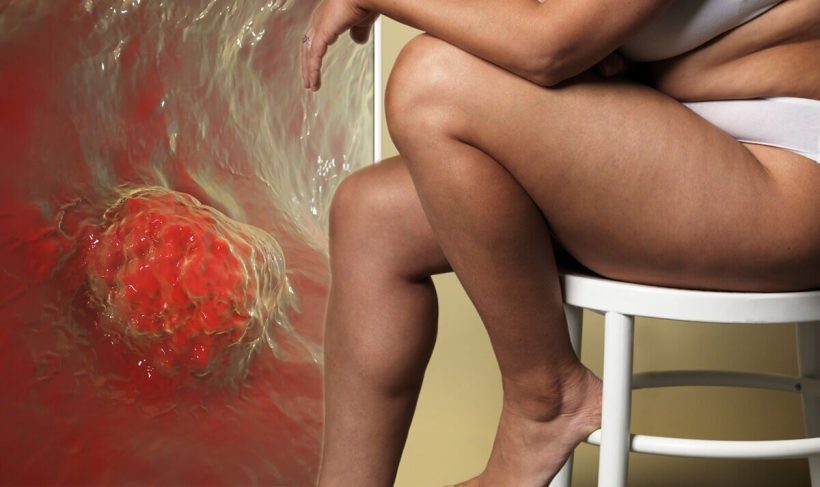Linda Nolan gives an update on her cancer diagnosis
We use your sign-up to provide content in ways you’ve consented to and to improve our understanding of you. This may include adverts from us and 3rd parties based on our understanding. You can unsubscribe at any time. More info
Maintaining a healthy weight is a struggle for many, but even rigorous exercise holds little influence on where fat sits on our bodies. How lipids are distributed, however, can be highly influential on our health. According to health experts, certain body shapes may be at higher risk of developing chronic illnesses such as diabetes and heart disease.
According to Miss Jacqui Fenner, an expert in body shaping who works with Deleo, apple-shaped people are typically heavy in the midsection and above the waist.
The expert explained: “While it may be simpler to reduce weight from the upper body than from the hips or thighs, excess fat around the waist or belly can be very harmful to your health.”
In fact, studies show that people with an apple-shaped body have a higher likelihood of developing health conditions such as cancer and diabetes.
When fat sits around the body’s midsection, it may increase the likelihood of lung and bowel tumours, according to studies.
READ MORE: Supplements warning: Four vitamins and minerals that may carry a higher risk of cancer

Compared to apple-shaped bodies, pear-shaped ones have a lower metabolic risk, but people who carry more fat around their thighs and hips aren’t exempt from health complications.
Doctor Ana, an aesthetics doctor working with Deleo, said: “Pear-shaped bodies have slender arms and shoulders, and their weight is distributed around their thighs, hips and buttocks.
“They may also develop a little fat pouch around their lower abdomen. Fortunately, these areas act as ‘fat storage’ and do not harm organs like the liver or heart, reducing the risk of heart attacks, strokes and diabetes.”
This body type is more commonly seen in women due to having higher levels of oestrogen, which causes fat to accumulate in the hips, thighs and lower abdomen.
The expert warns that fat that sits around the lower section of the body is notoriously hard to burn.
Pear-shaped people are therefore more likely to experience degenerative knee and joint issues and varicose veins, as body fat in these parts puts pressure on the veins.
Women who fall in this category tend also to be more susceptible to PMS (premenstrual syndrome) issues and fluid retention.
Fortunately, making healthful dietary additions in the form of grain bread, cereals, beans and lentils, and reducing intake of trans and saturated fats where possible, can help alleviate some of the aforementioned health issues.

People who have busts larger than their hips fall within the inverted-triangle body category.
“People with this physique, sometimes known as ‘the carrots’ are more likely to have narrow waists and hips and wider shoulders and busts,” explained Doctor Ana.
“It is thought that they have hyperactive adrenal glands, which speed up metabolisms and make it simpler to maintain a healthy weight.”
Another idealised body shape is the hourglass figure, but this should not imply that people with this body shape should relax about their health.

Ms Fenner explained: “With a high bust, full hips, and small waist, hourglass figures are perceived as one of the most attractive body forms and tend to acquire weight evenly across their bodies.”
Having larger breasts, however, carries a risk of straining the neck, shoulder and back, causing pain and making it difficult to exercise.
People with this body shape are advised to avoid processed foods, sweets and caffeine to stay on top of their health.
Healthful fats, such as avocados, salmon, nuts, seeds and olive oil are all encouraged to keep the body in good health.
Source: Read Full Article
